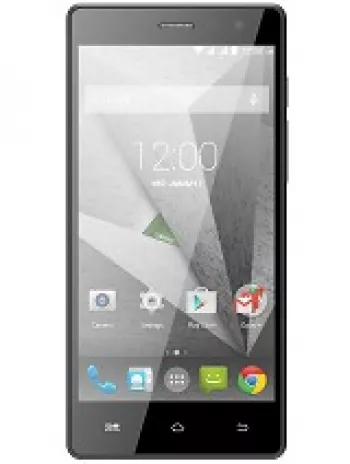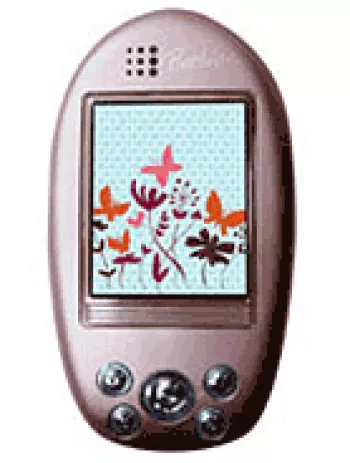
Overview of Gigabyte GSmart Saga S3
The Gigabyte GSmart Saga S3 was released in April 2014, positioning itself as an affordable phablet with notable features for its time. Despite being discontinued now, it remains a significant point of interest for those who appreciate the early evolution of large-screen smartphones.
Design and Build Quality
The GSmart Saga S3 boasts a robust and handsome design typical for its release period. Its dimensions are 168 x 83 x 8.5 mm and it weighs 190 grams, which gives it a balanced feel in hand without being overly cumbersome. The body supports a Dual SIM configuration, expanding its usability across different networks. Its black color adds to its sleek, understated elegance.
Display Characteristics
Sporting a 6.0-inch IPS LCD, the Saga S3 offers a screen-to-body ratio of approximately 71.2%. This display delivers a resolution of 720 x 1280 pixels at a density of around 245 pixels per inch, ensuring that images and text appear reasonably sharp. The large display was one of its standout features, catering to multimedia consumption and gaming—a growing demand at the time of its release.
Performance and Hardware
Under the hood, the GSmart Saga S3 runs on a Mediatek MT6582 chipset, built on a 28 nm process. It features a Quad-core 1.3 GHz Cortex-A7 CPU and a Mali-400MP2 GPU. Although modest by today's standards, these specifications were sufficient for handling basic tasks and applications typical for the Android 4.2 (Jelly Bean) environment. The device includes 1GB of RAM, which somewhat limits its multitasking capabilities but aligns with the expectations for mid-range devices back then.
Storage and Memory
The Saga S3 comes with 8GB of internal storage, which allows users to store a limited amount of data, apps, and media. However, it also features a microSDHC card slot, which provides a practical solution for users requiring additional storage space.
Camera Capabilities
Photography is supported by an 8 MP autofocus rear camera, accompanied by an LED flash to improve low-light performance. The main camera can record video, though specifics on resolutions are modest compared to contemporary standards. On the front, a 2 MP selfie camera is present for basic video calls and self-portraits.
Audio and Connectivity
For sound, the device includes a loudspeaker and supports a 3.5mm audio jack, allowing users to connect traditional headphones. Connectivity-wise, it covers essentials with Wi-Fi 802.11 b/g/n, Bluetooth 4.0 with A2DP, and GPS functionality. Notably, it lacks NFC support but includes an FM radio—an appreciated feature for some users. A microUSB 2.0 port handles charging and data transfer.
Sensors and Additional Features
The GSmart Saga S3 is equipped with basic sensors like an accelerometer and proximity sensor, covering fundamental user interaction functionalities. While it may not include advanced sensors found in later models, these features provided adequate support for available applications and games at the time.
Battery Performance
One of the device's highlighted features is its Li-Ion 3000 mAh non-removable battery. This battery was capable of providing up to 255 hours of standby time and up to 12 hours of talk time. This was on par with industry averages, providing reasonable longevity for day-to-day activities.
Conclusion
The Gigabyte GSmart Saga S3 stands as an intriguing representative from the era when smartphone screens started breaking past the 5-inch barrier. Despite being discontinued, its specifications highlight a balanced approach to performance, size, and functionality. It remains a meaningful piece of Gigabyte's GSmart lineup and offers nostalgic value for those interested in the evolution of smartphones.
Main Features of Gigabyte GSmart Saga S3
- Large 6.0-inch IPS LCD display providing a good viewing experience.
- Dual SIM support for managing two phone numbers simultaneously.
- Quad-core 1.3 GHz Cortex-A7 processor, offering decent performance for basic tasks.
- Expandable storage with microSDHC slot for additional space.
- 8 MP main camera with autofocus and LED flash for clear photos.
- Presence of a 3.5mm headphone jack and FM radio support.
- Wi-Fi 802.11 b/g/n and Bluetooth 4.0 for reliable connectivity.
- Built-in GPS for navigation and location services.
- 3000 mAh battery providing up to 12 hours of talk time.
Disadvantages of Gigabyte GSmart Saga S3
- No support for 4G LTE connectivity.
- Outdated Android 4.2 (Jelly Bean) operating system.
- Limited internal storage of 8GB which might not be sufficient for most users.
- Low RAM of 1GB, impacting multitasking performance.
- Non-removable battery which makes battery replacement difficult.
- Basic camera setup with 8 MP rear and 2 MP front cameras.
- No NFC capability for contactless payments.
- Device is relatively heavy at 190 g.
- Limited availability and support, as the device is discontinued.
- Screen resolution is relatively low at 720 x 1280 pixels for a 6.0-inch display.


View Also
More Phones
All Rights Reserved +13665 Phones © Mobilawy 2025

























